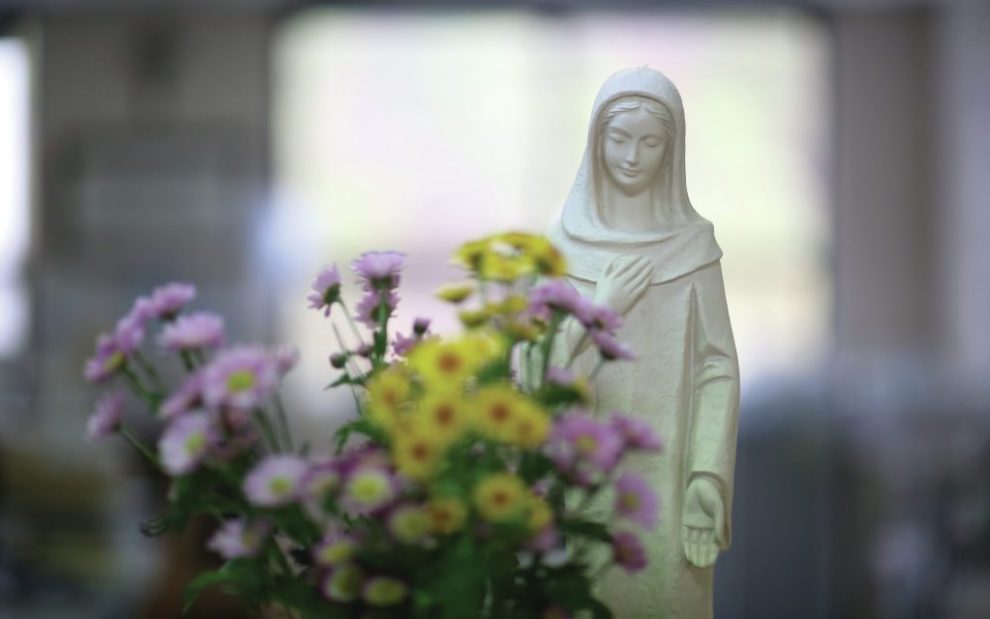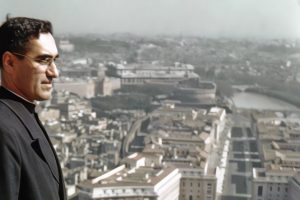Grandma knows.
She sits still at the end of her cream leather couch, legs wrapped in a Green Bay Packers blanket, eyes tuned to the television screen. A plethora of pills and pastries cover the snack table at her feet. The smell of spring flowers lingers across the living room. Each bouquet, along with accompanying cards and photos, reminds Grandma of the litany of loved ones who have visited in recent weeks. One of my favorite mementos is the St. Patrick’s Day balloon still floating in the corner more than a month after the feast. It is a fitting symbol of my Irish grandma’s own resilience.
In mid-February the color in Grandma’s face looked off. Doctors soon discovered cancer coursing through her body. All signs pointed to a fast death—maybe days, or a few weeks if we were lucky. Family members quickly secured airline tickets and packed up cars. It was time to say our final goodbyes.
Yet here we sit on a Sunday morning, exactly two months out from her diagnosis. Her petite frame thins by the day, but remarkably she is in no pain. As soon as the big wooden clock strikes 9, Grandma lifts her right hand to her forehead and starts to pray:
In the name of the Father, and of the Son,
and of the Holy Spirit. Amen.
I sit beside her as the televised Mass begins. We chuckle when the local sportscaster gets up to proclaim the first reading. I tear up as the cantor sings “The Lord Is My Shepherd.” It is the psalm we have planned for her funeral. As the clock ticks on, the familiar ritual continues: homily, creed, intercessions. Grandma barely moves. Her whole being fixates on the liturgy taking place on the screen. I almost wonder if she can smell the incense.
Minutes later, during the eucharistic prayer, the priest calls to mind those who have died:
Remember also our brothers and sisters
who have fallen asleep in the hope of
the resurrection,
and all who have died in your mercy:
welcome them into the light of your face.
I sneak a glance at Grandma. How does this prayer land with someone so close to death? I watch as she bows her head ever so slightly and closes her eyes. Grandma is letting the words wash over her like rain on a sweltering day. She radiates deep peace and possibility. Her whole being seems to proclaim: “I believe. I have hope. I am ready for your welcome.”
I will remember this moment for a long time.
Grandma knows her time on Earth is almost up. She knows something else too: Grandma knows that soon she will join the chorus of ancestors who have fallen asleep in the hope of the resurrection. For nearly a century, this faithful woman has professed belief in a God who conquers death. She knows the stories in her bones: how Jesus loved this world to the end; how he suffered, died, and then rose to life everlasting; how he longs to bring others into the joys of heaven. Grandma has been nourished by the bread of life and the cup of salvation tens of thousands of times. She believes in their saving power.
So when I ask her how she’s doing at the end of Mass, as I say my final goodbye, I am moved but not surprised by her answer.
“I’m fine,” Grandma remarks with her trademark assurance. “I’m just fine.”
This article also appears in the November 2021 issue of U.S. Catholic (Vol. 86, No. 11, page 7). Click here to subscribe to the magazine.
Image: Pixabay/subin cho














Add comment